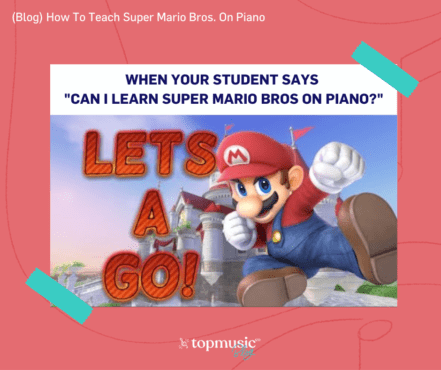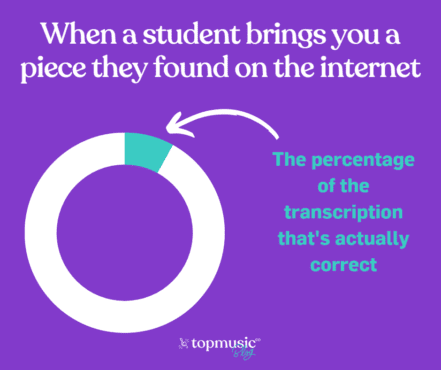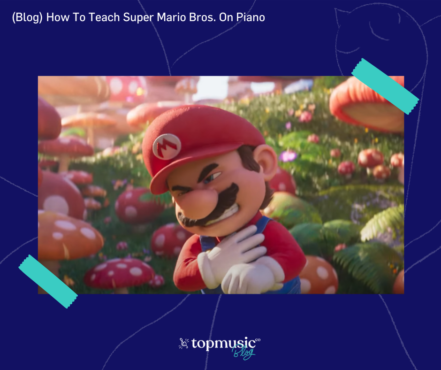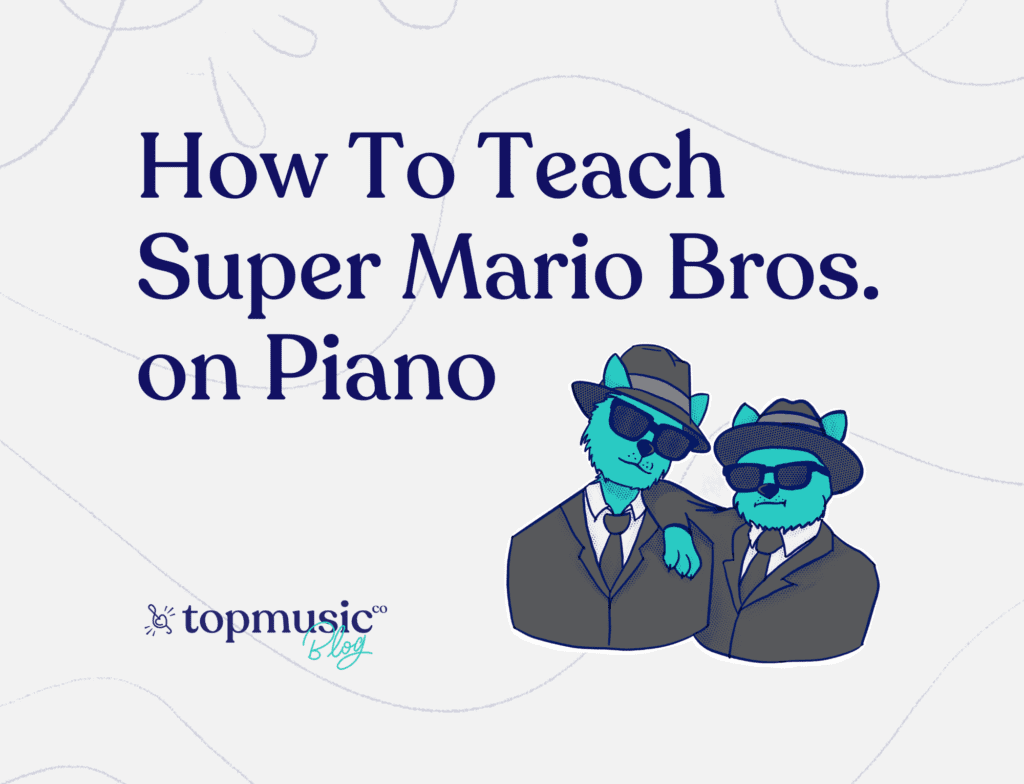Do you have students who love Super Mario and would love to learn music from the video game? We have tips to help you out!
Have you ever been asked these questions by your students?
“Can I learn Mario pleeeease?”
“I was playing Mario all weekend…Can I learn how to play it on the piano?”
And more recently,
“Have you seen the new Mario film? Can you show me how to play the theme on the piano?”
In the past, these questions may have made you say, “Mamma Mia!” (in Mario’s voice, of course) but our tips will help you say, “Let’s-a-go!” (again, in Mario’s voice. Naturally.)

Table Of Contents:
I’m sure you’ve had a student turn up to their lesson holding sheet music they found online. They’ve been trying to learn it themselves, but it’s hard.
The music makes no sense to them, so you’re being asked to help.
After you’ve commended them on their enthusiasm to learn new music (and patted yourself on the back for being an excellent teacher who instils the love of music in their students) you look at the music.
What a state.

Online transcribers (especially of video game music) don’t seem to understand key signatures, 8va signs, or rhythm.
This means the music is a mess of notes. There are a million ledger lines to baffle the player, and unnecessary tied notes. And let’s not even mention those chords that are physically impossible to play.
You ask where they found the music and you get a shrug and a “Dunno.”
You’re tempted to say, “Enjoy listening to the music as you play the game. We won’t be playing it on the piano.”
But your student was SO excited at the idea of playing the piece. They’ve even tried to learn it by themselves. That attitude has got to be embraced, surely.
Luckily, there are many sources of authorized and licensed versions of video game music that are perfect for us to teach to our students.
Psst, did you know that TopMusicPro members get discounts at Sheet Music Plus and Musicnotes?
For Super Mario fans who would love to play their way through pieces from the games, Alfred Publish has a fantastic book:
Super Mario Series for Piano: Easy Piano
(You can also find it on Sheet Music Plus)
As with all books that claim to be ‘easy’ there’s actually a fair range of both musicality and difficulty in the book. We have 2-line fanfares to quite challenging 4-page pieces.
A lot of pieces are transposed into C major, making it as accessible as possible.
However, the key feature that makes video game music so fun to listen to is also the feature that makes them so hard to play.
The rhythm.
Have a listen to Super Mario Ground Theme (the ‘main’ theme)
It’s the first piece in the Super Mario book, and it’s definitely the one students will know the best.
Unfortunately, it’s also one of the trickiest!
One of the easier pieces is “Underwater Background Music” which is a fairly straightforward waltz of about Prelim/Grade 1 level.
Other notable pieces in the book are:
| Title Of The Piece | Feature Of The Piece |
|---|---|
| The Lost Levels – Ending | A fairly easy piece in 4/4 and a good intro to triplets |
| Castle Background Music | A very dark sound and starts with melody in the left hand which is a good challenge |
| Dr Mario Title Theme | A fun piece in a jazz style with a walking bass which students around Grade 2 level should find quite easy |
| Yoshi’s Island | This has a bossa-nova rhythm in the LH and has a great island feel if your students can manage the rhythmic challenges |
| Water Land (from Super Mario 64) | Probably my favourite! Very well-written and I think kids will really love the harmonies. It’s also 4 pages (plus repeats) so could easily work as a recital piece |
| Dolpic Town (from Super Mario Sunshine) | A jazzy piece but slower, more bluesy, with quite easy rhythms |
| Ending Staff Credit Roll (from Super Mario Galxay) | One of the more challenging and longer pieces (4 pages) and is a condensed version of a full orchestral score |
As I mentioned before, this is probably the main theme your students will be interested in learning. It’s what you associate with Mario.
Looking at the music (the top search on SheetMusicDirect) here are a few things I would take into consideration when teaching this piece to your students:
When students turn up with music they want to learn or request certain pieces, it can be overwhelming for us as the teacher.
If you feel more comfortable teaching more traditional repertoire, being faced with pop music or video game music can make you go

Let us help you!
Within TopMusicPro we have an array of courses to help you feel more confident when it comes to teaching your students to play…
